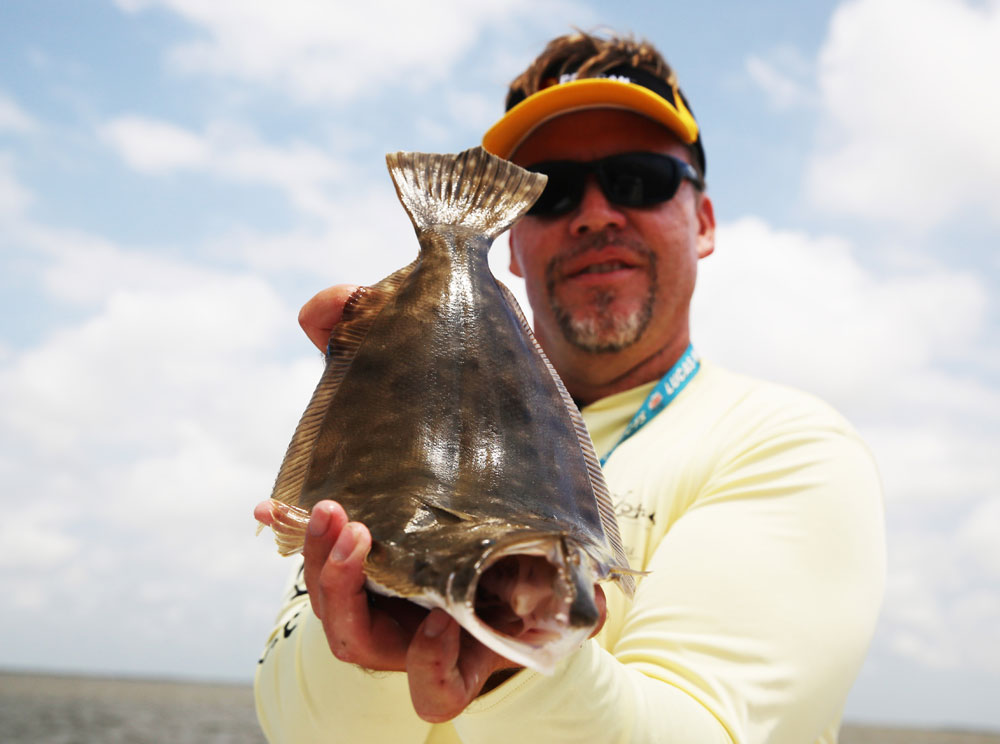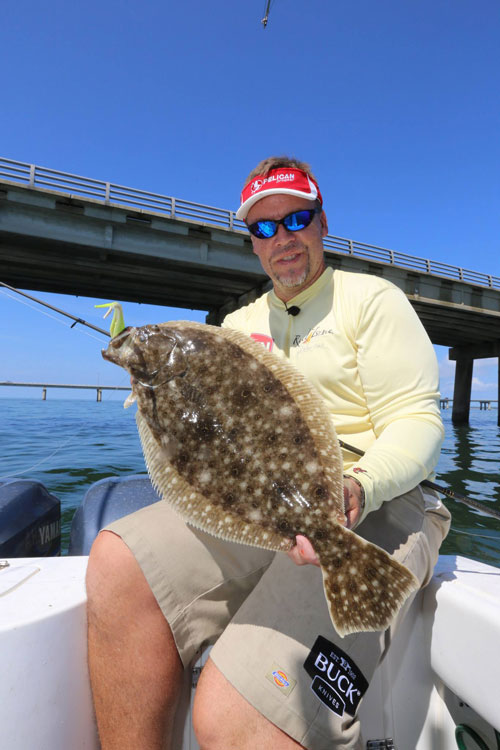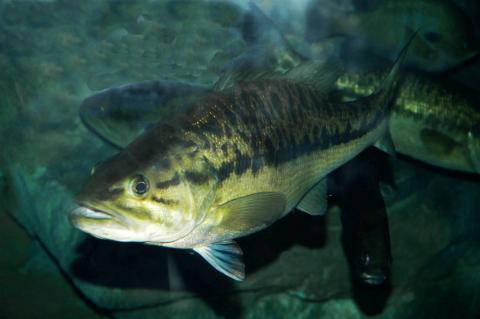Mark Davis from Lexington, South Carolina, uses his Pure Bay boat to fish from Montauk, New York, to Brownsville, Texas, for all saltwater species. Each year Davis films seven shows in the U.S. and six shows from destinations all over the world for his TV show, “BigWater Adventures” on the Outdoor Channel. Davis has been on the Outdoor Channel for 11 years.

The flounder is the ultimate ambush predator. Although you’ll hear numbers of stories about flounder coming up off the bottom and attacking a top-water lure or a spinner bait, what a flounder does best is lay on the bottom where water is being channeled in or out of an area. The flounder doesn’t aggressively attack a bait but instead waits on the bait to come to it. Having said that, sometimes flounder will chase baits for short distances. But to catch flounder, my number-one rule is to pinpoint ambush points where flounder can attack bait.
Big flounder often will stake out an area just like a big deer stakes out his home range. Flounder like pinch points. For instance, on an outgoing tide, a creek or an inlet that goes in or out of a bay or an estuary region, the flounder will sit in that pinch point. Then when the tide runs out, the bait will be coming to the flounder. When the tide’s going in, the bait also will be coming to that flounder. So, to target flounder to catch, I want to find these pinch points where the tide is pushing the bait to the flounder.
 I once asked an older fisherman where we should anchor our boat to catch flounder. He didn’t answer me for what seemed like 5 minutes. When I asked why he waited so long to tell me where to anchor the boat, he smiled and said, “I wanted to see where the finger mullet and other bait fish were schooling on an outgoing tide. I know that’s where the flounder have to be.”
I once asked an older fisherman where we should anchor our boat to catch flounder. He didn’t answer me for what seemed like 5 minutes. When I asked why he waited so long to tell me where to anchor the boat, he smiled and said, “I wanted to see where the finger mullet and other bait fish were schooling on an outgoing tide. I know that’s where the flounder have to be.”
As soon as we anchored down, every time a school of finger mullet came out of that small drain, they had to pass between two oyster bars where the bars narrowed down the drain. The flounder were laying on the edges of the oyster bars, eating those finger mullet as they came through that small cut.
Another important flounder-catching technique I use is I try to determine the size of the bait that the flounder are feeding on and put that same size bait on my hook. At certain times of the year, generally in the spring, flounder will be feeding on small shrimp, small finger mullet and small bait fish. I want to bait with a small bait, or I’ll use a small plastic imitation of the bait the flounder are eating.
The next step to catching that flounder is to know when to set the hook. A flounder likes to inhale a bait and then turn it around in its mouth, which is important for flounder anglers to understand. Flounder have a relatively large mouth but a small throat or gullet as compared to the size of their mouths. Once a flounder captures the bait in its mouth, it then has to turn the bait around to make it go head-first down its gullet. Usually when the flounder grabs the bait, the fish will settle down on the bottom. Then you’ll feel a tick, tick on the line. That’s when the flounder is turning the bait around in its mouth to swallow the bait head-first. So, instead of setting the hook when you first feel the bite, wait until you feel that second tick, tick on the line, which indicates the flounder has its mouth closed and is attempting to turn the bait around to swallow the bait. That’s when you set the hook.
If you’re fishing with plastic lures, using some type of scent in conjunction with the lure will cause the flounder to hold onto the bait longer. When the flounder closes its jaw, its jaws come together very tightly. If you don’t set the hook hard, all you’ll do is pull the flounder forward, the fish will open its mouth, and your bait and hook will come out of its mouth. To simplify when to strike, I always tell my anglers to set the hook on the second bite. Then you’ll get much more hook penetration. Nine out of 10 times, you’ll be able to land the flounder.
Another place to find flounder is where a 4- to 5-foot-deep hole is. At the end of that hole may be a hump that’s only 2-to 3-foot deep. When the current is coming down to that hole, it’s washing silt and bait up to the top of the hole. So, the flounder will be laying on the hump behind the hole and eating the bait that moves up to the top of the hole.
For TV purposes, I use artificial baits; however, when I’m fun fishing for flounder, I like a castnet to catch the bait that’s in the creek or the drain where I’m fishing. Then I use that live bait I’ve caught to catch flounder.






























